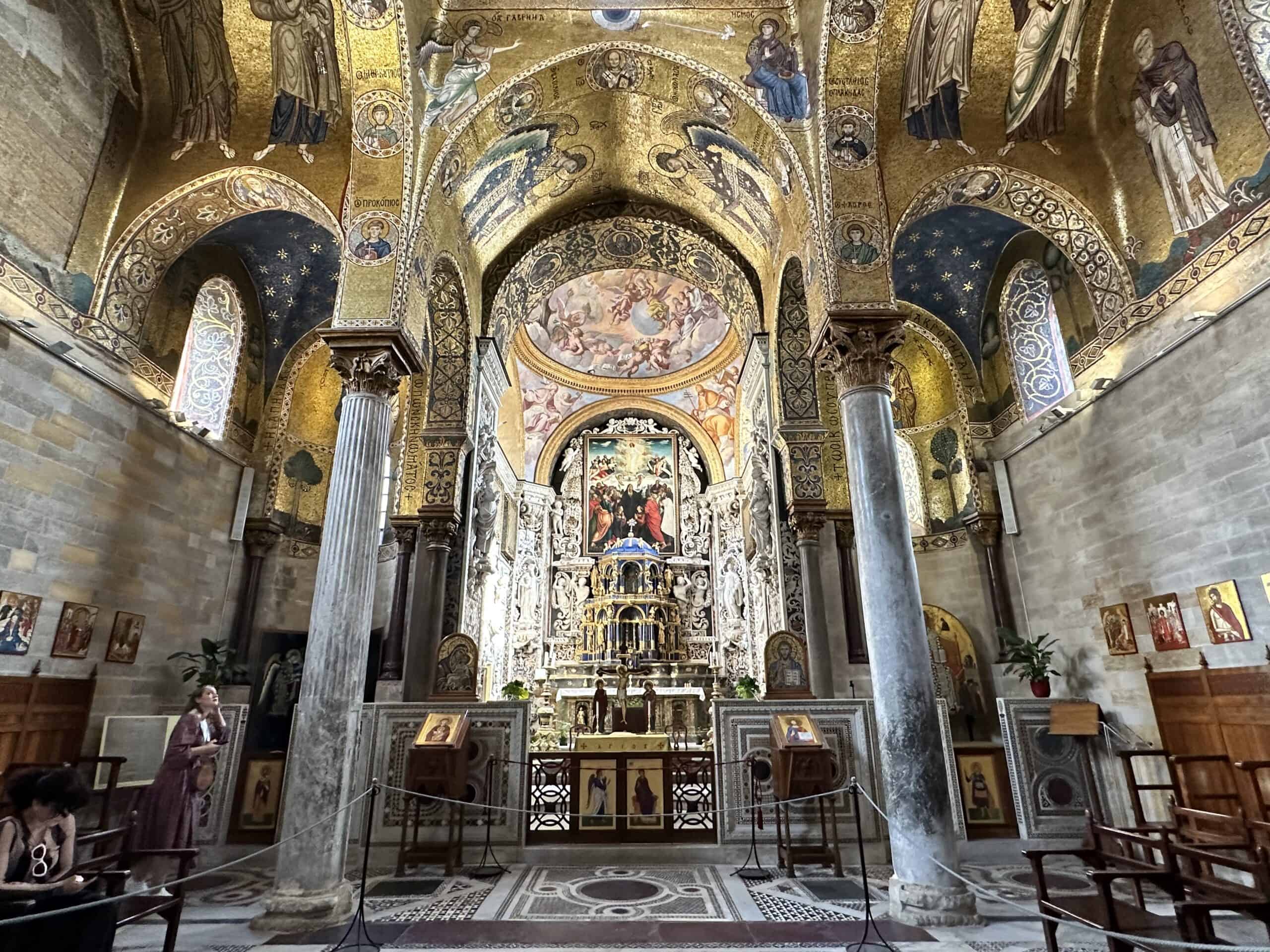
The Church of Santa Maria dell’Ammiraglio, better known as the church of the Martorana, is one of the most fascinating and historically rich monuments in the heart of the historic center of Palermo.
It is an extraordinary monument, able to tell the artistic events of nine centuries of Sicilian art and culture.
Its construction dates back to 1143 at the behest of George of Antioch, an admiral of Syrian origin but of Orthodox faith, in the service of King Roger.
The cycle of mosaics that embellishes the Church of the Martorana was completed before 1150 and is the oldest in all of Sicily. The centerpiece of this artistic composition is the image of Christ Pantocrator in the dome with four angels at his feet.
Eight prophets are depicted in the drum of the dome and the four evangelists in the niches of the corner pendentives.
During the seventeenth century, numerous interventions were carried out with the addition of chapels, marble decorations and frescoes and the creation of a new Baroque portal. Finally, in 1870, the ownership of the church and monastery passed to the state.
Access to the oldest part of the church is preceded by two mosaics from 1740. On the left is George of Antioch, kneeling at the feet of the Virgin while on the right you can admire the coronation of Roger by Christ Pantocrator.
Inside the Admiral’s Church there is also a lapis lazuli tabernacle, a baptismal font from the Norman period and a wooden door from the twelfth century with Arabic carvings.
During the restorations between 1870 and 1873, the church was dedicated to San Nicolò dei Greci.
Today it is the seat of the co-cathedral of the Eparchy of Piana degli Albanesi and represents a point of reference for the community of faithful of the Greek Orthodox rite.
The monastery of the Martorana, from which the other name with which the Church of Santa Maria dell’Ammiraglio is called derives, was so called because it was built by Eloisa Martorana.
The nuns of the monastery were famous for making almond paste-based sweets with the appearance of fruit. It seems that the idea for these creations came to the nuns on the occasion of a visit by the Pope. Not being able to serve fresh fruit, they decided to knead fake fruit to stick to the trees.

















